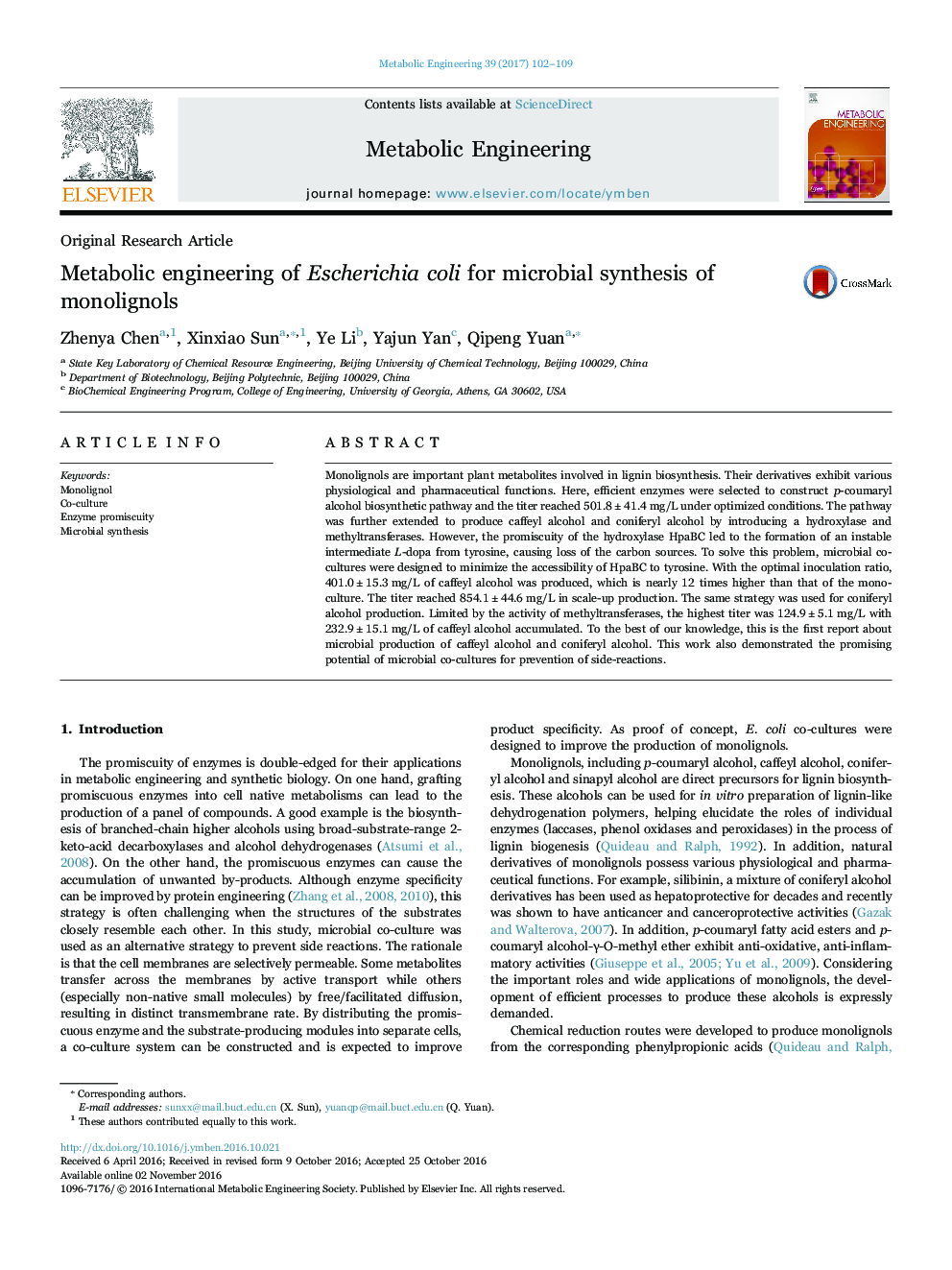| کد مقاله | کد نشریه | سال انتشار | مقاله انگلیسی | نسخه تمام متن |
|---|---|---|---|---|
| 6452784 | 1418339 | 2017 | 8 صفحه PDF | دانلود رایگان |

- E. coli strains were constructed to produce three monolignols.
- Efficient biosynthesis of p-coumaryl alcohol and caffeyl alcohol was achieved.
- Microbial production of caffeyl alcohol and coniferyl alcohol was achieved for the first time.
- Microbial co-culture strategy was demonstrated to have the potential of preventing side reactions.
Monolignols are important plant metabolites involved in lignin biosynthesis. Their derivatives exhibit various physiological and pharmaceutical functions. Here, efficient enzymes were selected to construct p-coumaryl alcohol biosynthetic pathway and the titer reached 501.8±41.4 mg/L under optimized conditions. The pathway was further extended to produce caffeyl alcohol and coniferyl alcohol by introducing a hydroxylase and methyltransferases. However, the promiscuity of the hydroxylase HpaBC led to the formation of an instable intermediate L-dopa from tyrosine, causing loss of the carbon sources. To solve this problem, microbial co-cultures were designed to minimize the accessibility of HpaBC to tyrosine. With the optimal inoculation ratio, 401.0±15.3 mg/L of caffeyl alcohol was produced, which is nearly 12 times higher than that of the mono-culture. The titer reached 854.1±44.6 mg/L in scale-up production. The same strategy was used for coniferyl alcohol production. Limited by the activity of methyltransferases, the highest titer was 124.9±5.1 mg/L with 232.9±15.1 mg/L of caffeyl alcohol accumulated. To the best of our knowledge, this is the first report about microbial production of caffeyl alcohol and coniferyl alcohol. This work also demonstrated the promising potential of microbial co-cultures for prevention of side-reactions.
Journal: Metabolic Engineering - Volume 39, January 2017, Pages 102-109